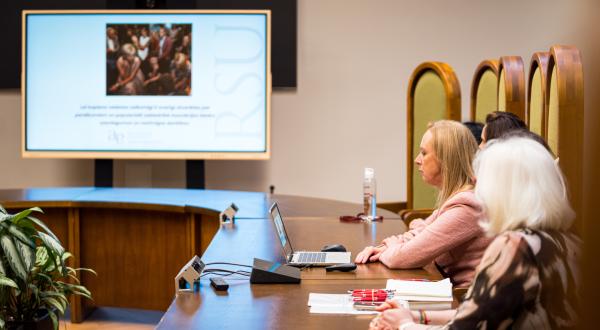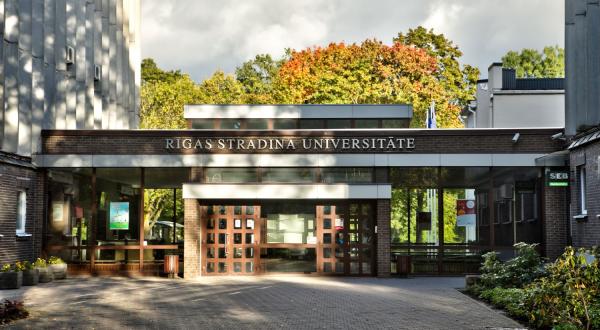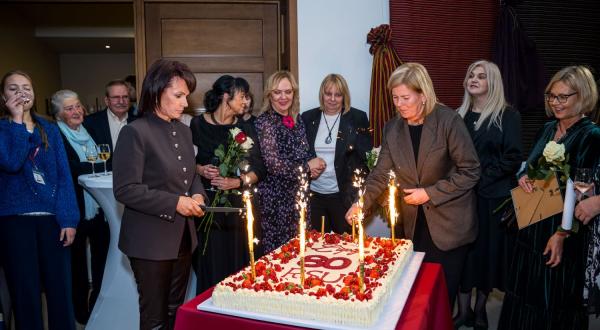Laboratory of Anatomy
The Laboratory of Anatomy is an integral part of the Institute of Anatomy and Anthropology, as it is unimaginable to provide proper training for prospective physicians to work with patients if they have acquired only theoretical knowledge.
The Institute of Anatomy and Anthropology offers one of the most technically advanced medical training opportunities available in today’s modern study environment. Students have access to tablets and posters, real bones and organs and plastic replicas thereof. The institute is proud of the plastinated specimens produced by the German anatomist Gunther von Hagens which offer unprecedented opportunities for anatomical studies. The most recent acquisition of the Institute of Anatomy and Anthropology is the virtual 3-dimensional dissecting table, which contains over 600 clinical cases and makes it possible to take a detailed look at the examples of the structure of various animal skeletons.
However, it should be noted that none of these materials can replace the work with real cadavers. The Laboratory of Anatomy provides the possibility to study muscles and other organs on cadaveric exhibits and to perform research by dissecting a cadaver under the guidance of the teaching staff.
As of 1 January 1993, the work of the Laboratory of Anatomy is governed by the Cabinet of Ministers Regulations On the Protection of the Body of Deceased Human Beings and the Use of Human Tissues and Organs in Medicine. Before adoption of these regulations, the Laboratory of Anatomy operated by the virtue of a permit issued by the Minister of Health A. Požarnovs, allowing the use bodies of deceased humans for educational purposes and research. The most important changes that have been introduced and are binding on the laboratory since 2012 are that the Laboratory of Anatomy receives only bodies of those deceased individuals who have donated their bodies to science and medicine during their lifetime and have made a respective expression of will in the records kept by the Office of Citizenship and Migration. In accordance with the introduced legislative amendments, on 1 September 2015, the State Agency of Medicines issued to the Laboratory of Anatomy a permit regarding the use of tissues and cells, providing the Laboratory of Anatomy with extensive possibilities to use the body of the deceased in the study process and also to prepare new specimens.
Following the dynamic flow of public opinion and profile-raising activities, the Theatrum Anatomicum has also responded to negativity in society that is not punished, but reveals morally ethical dilemmas. Such examples include cases where people try to „donate” their living relatives to the Theatrum Anatomicum or cases when an individual donates his body to science, but commits suicide... In addition to the legal aspects, there is the question of understanding mercy as a supreme moral value, and the Theatrum Anatomicum has legally formulated its right to refuse to accept a human body in such cases. However, it should be noted that the regular work and cooperation with mass media has accounted for a situation that at the end of 2016 the Institute of Anatomy and Anthropology had practically the full quota of required cadavers. This fact, in turn, can be regarded as an enhancement of the morally ethical level of Latvian society, fully revealing the generous nature of mankind.
Employees
Related news
 When learning turns into collaboration: birthday conversation with Prof. Tatjana KoķeAnniversaries, RSU History
When learning turns into collaboration: birthday conversation with Prof. Tatjana KoķeAnniversaries, RSU History Towards a stronger alumni community: RSU Alumni Association strategy for the next five yearsRSU Alumni
Towards a stronger alumni community: RSU Alumni Association strategy for the next five yearsRSU Alumni RSU as safe place and study opportunity for Ukrainian students For Students, Support for Ukraine, For RSU Employees, RSU Alumni
RSU as safe place and study opportunity for Ukrainian students For Students, Support for Ukraine, For RSU Employees, RSU Alumni Join the RSU Alumni platform!RSU Alumni
Join the RSU Alumni platform!RSU Alumni RSU Liepāja Branch celebrates 80th anniversaryFor Students, For RSU Employees, Anniversaries, Liepājas filiāle
RSU Liepāja Branch celebrates 80th anniversaryFor Students, For RSU Employees, Anniversaries, Liepājas filiāle




